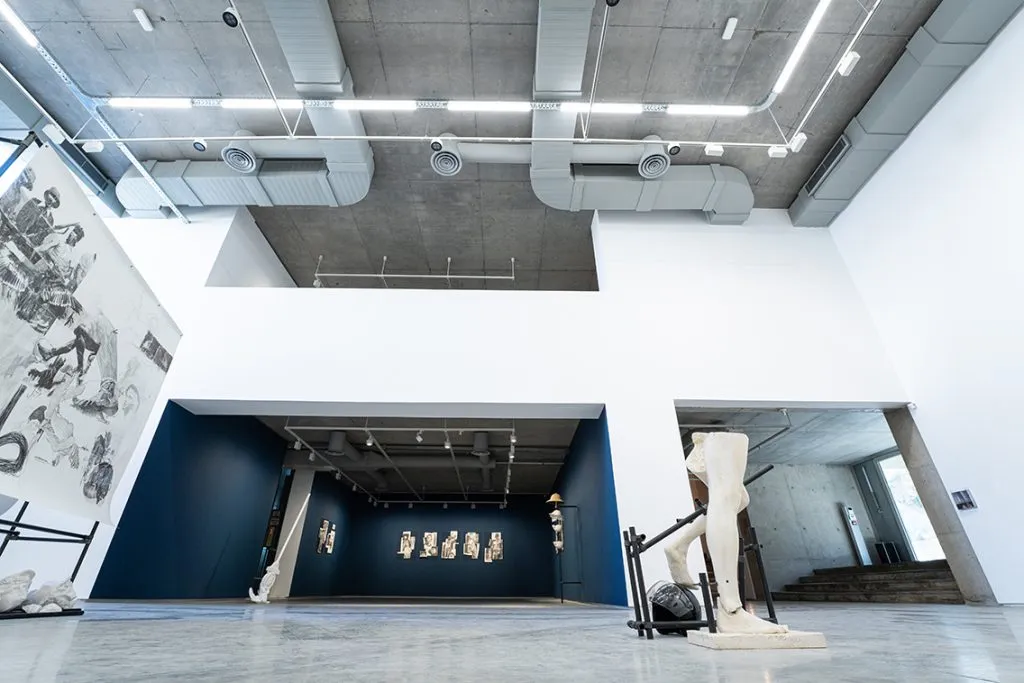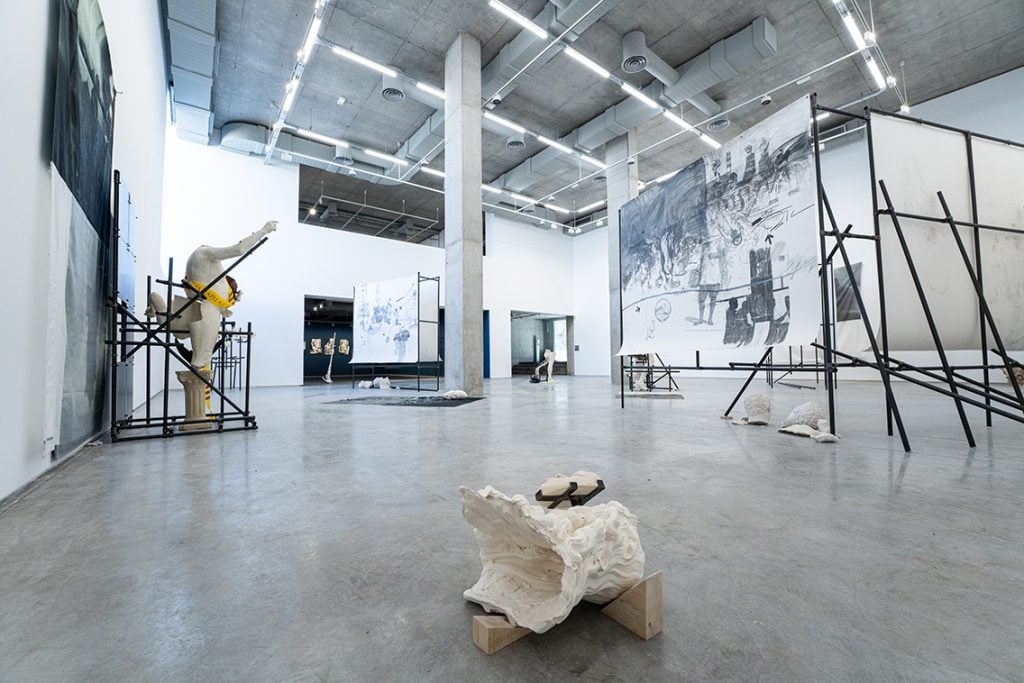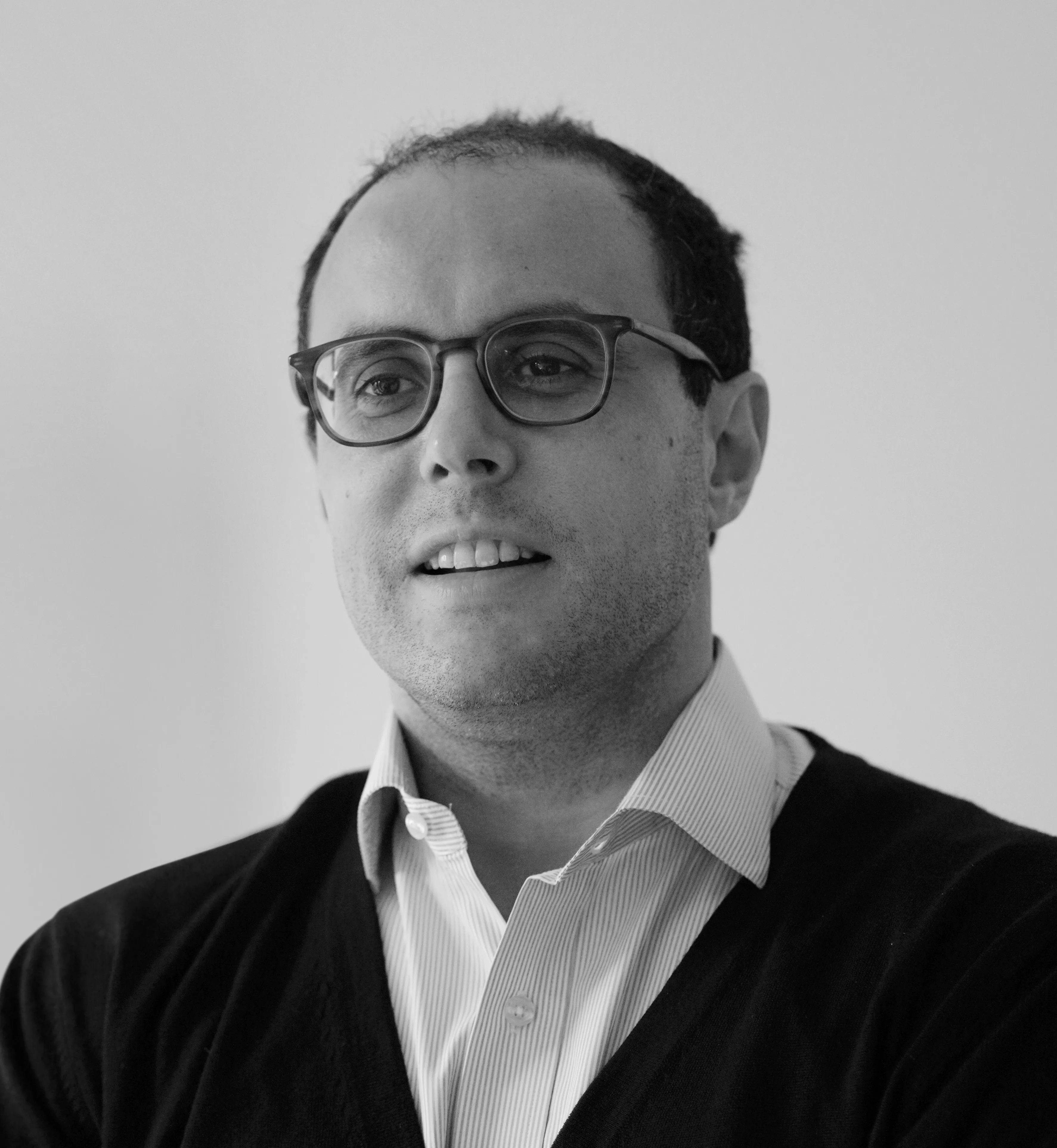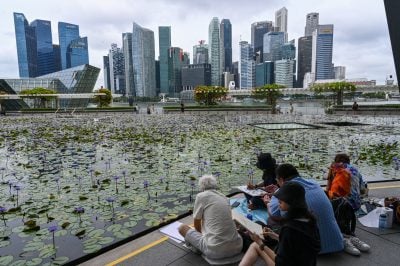Selma Feriani’s eponymous art gallery, which opened on 25th January 2024, is one of the growing number that have sprung up in Tunisia in the wake of the Arab Spring which also ended the dictatorial rein of Zine El Abedin Ben Ali in 2011.
Feriani says this reflects not only a change in the cultural climate, but also that there are fewer logistical barriers. “What really changed after the revolution [of 2011] was the use of public spaces, which was not possible before the revolution.
“That allowed for a lot of interesting projects sourced from outside galleries and outside institutions. There is also an emergence of art project spaces like La Boite Contemporary Art Centrale,” she explains.
Increased access to the city’s spaces for the artistic community has allowed greater forms of self-expression, she says. “For me, one of the most important festivals in Tunisia is Dream City, “she says.

The 9th edition of the Dream City festival took place in Tunis’s old town, the Medina from 22 September to 8 October 2023. The programme for this unique festival of Art in the City includes numerous works by artists from over 18 countries – Tunisia, Morocco, Democratic Republic of Congo, France, Portugal, Lebanon, Egypt, Belgium, Syria, United Kingdom, Palestine, United States, Kuwait, Nigeria, Haiti, Turkey, Mali, and Argentina), with creations, concerts, debates and immersive projects.
“The festival has expanded a lot after the revolution because they’ve been able to use the Medina and downtown Tunis in a very efficient way. They had access to a lot of sites that were not necessarily accessible to the public.”
Art has always been central to Tunisia, which in the 16th century was one of the centres of Arab culture and learning. Its artistic heritage bears influences from the Levant, Italy, Spain, Persia and the Near East, resulting in a distinctive Arabesque style.
Tunisian artists have long been recognised for their expertise in creating captivating mosaics and pottery which not only provide mesmerising decorative designs, but also narratives around the culture and history of the people.
With her new gallery, Feriani, who curates another gallery in London, wants to build cultural bridges from the Middle East to Europe and Latin America. The United States, she says, is a place that she will turn her attention to later.
The opening, attended by a who’s who in Tunis as well as renowned international collectors and specialised media, saw an exhibition by Nidhal Chamekh, one of five Tunisian artists Feriani represents in addition another 12 international ones.
She opened her first gallery in 2010 in London where she lives and another at Sidi Bou Said, a picturesque village, that is home to a bustling community of artists, in 2013. Housed in a former convent, it had nowhere near enough space to house the curator’s big dreams. Sidi Bou Said with its cobbled stones and narrow streets was also difficult to access and the space limiting for artists to fully work with.
The new gallery, located in La Goulette, an industrial port area in the northern suburbs of the capital, Tunis however, is a full 2,000m2, enough to accommodate the broad ambitions of its owner – such as having 17 artists in residence – as well as hosting others from other parts of the world to come and create site-specific pieces.
A big space for big ideas
She says it is the result of three years of “painstaking work” by herself and her team. “My idea was to work on site-specific projects, so every artist would come and put together a project that is specific to the space, because it was very difficult to develop a project in their studios, and then come and work on the scenography. They had to come, spend time in the space in Tunisia, and then develop the project.”
Naturally, the very idea of such a space can be challenging but Feriani says she is happy with the results. “A new space comes with a challenge because you need to get used to the space and understand how you’re going to take things forward, especially when you are displaying visually strong works and also very research-driven and with a lot of conceptual elements but I really took my time to make sure every single detail is looked at. I wanted to make sure it’s perfect so that when you come in, you have the same experience as you would in any major gallery around the world.” The initial reviews would seem to bear out her tenacity. “Art,” as she herself puts it, “has always been an act of resistance.”
With this new space. “We have an atelier (a residency) where the artist can spend time from August until January to produce sculptures and other installations. In September we will show, for the first time in Tunis, ‘French Pavilion’ [a grouping of installations and a film by Algerian artist Zineb Sedira) so that those who couldn’t go to the Venice Biennale can watch it here in Tunis. We have a Peruvian artist coming in November with a show developed in Tunisia with marble artisans.”

On the global art map
She wants the space to be a hub for international collaborations and artistic conversations. “So we will create this bridge and foster these conversations which, for me, are very important.” She has a schedule of events already planned for the next two years.
Feriani’s desire for international cooperation is mirrored by international interest in the artists that she is curating, some of whom have been associated with her gallery for over a decade and have really matured in their output over the period.
She expects that some of the artists will have the opportunity to showcase their work at the next Venice Biennale, for example, while globally renowned galleries such as the Tate Modern in London and the Guggenheim in New York, US.
A lot of institutions globally are looking at us as a result of the work we have done to promote our artists. I think curators and institutions are definitely looking at what’s happening here. Undoubtedly, we are on the map for them now.”
Will local collectors be able to make her venture viable? Despite the growth of the local art scene and collectors in Tunisia, Feriani says she doesn’t anticipate commercial success in the near term, especially given the economic downturn the country is facing.
“Commercially, the domestic market alone will not make [the gallery] necessarily viable. I think that’s the case for most of the commercial galleries and tours because there are very few domestic collectors and they are very price sensitive as well. And I don’t think it’s going to get better anytime soon.” she reports.
However that has not deterred her. “It looks complicated right now but we have a vision and we have a strategy, so there is no way for us to go backwards. We will continue to develop things back home. It’s in the DNA of the gallery. It’s my vision, my strategy, and it’s important for me to do it in Tunisia and to have a voice from Tunisia to the world,” she says.
It surely also helps that as an international gallery, the works are displayed elsewhere (in Western cities), enabling them to reach a wider audience and potential buyers.
World class
Feriani says she intends the gallery standards and quality to evolve to world class – her inspiration is London’s famous White Cube.
“A new space comes with a challenge because you need to get used to the space and understand how you’re going to take things forward, especially when you are displaying visually strong works,” she says.
“But I really took my time to make sure of every single detail. I wanted to make sure it’s perfect so that when you come in, you have the same experience as you would in any major gallery around the world.” The initial reviews bear out her tenacity. “Art,” as she herself puts it, “has always been an act of resistance.”
The gallery also has extra facilities such as a bookstore and a library where people can either buy or borrow books. Again, unlike in purely commercial galleries, viewers will get a peek behind the curtains of the creative process, as they were able to with the exhibition that the gallery opened with.

“For the show we put together for Nidhal Chamekh, we had the main space showing the project but on the mezzanine and in the basement, we were able to show the process, how the exhibition was made and all the bibliography, meaning all the information and books used by the artist and the imagery and research behind the project.”
This is some distance from the typical commercial gallery where visitors are only able to see the product and make a purchase when they are moved to. “It was important for me to show a little bit of what happens behind the exhibition because it gives artists and also students a way to access the research and to better understand the thinking behind the creative work,” she emphasises.
Summarising the concept behind her efforts, she says: “What we are trying to do, is not only to promote art, but everything related to the city of Tunis.
“So people can come, travel for three days or a long weekend and not only go to the beach but also discover all the art centres and studios; take part in culinary tours and of course, visit the most famous museums – Carthage, and its Roman ruins, and the newly renovated Bardo, one of the largest museums on the continent. So we provided a tailored programme for our international guests.”
Feriani says she has received positive feedback from critics, curators, collectors, journalists and art lovers who saw the first exhibition and the city of Tunis as part of the package. For her, that’s exactly the objective she has set out for herself.
Want to continue reading? Subscribe today.
You've read all your free articles for this month! Subscribe now to enjoy full access to our content.
Digital Monthly
£8.00 / month
Receive full unlimited access to our articles, opinions, podcasts and more.
Digital Yearly
£70.00 / year
Our best value offer - save £26 and gain access to all of our digital content for an entire year!

 Sign in with Google
Sign in with Google 



